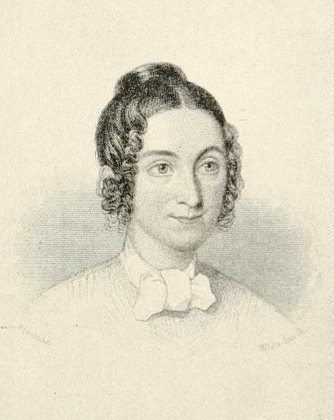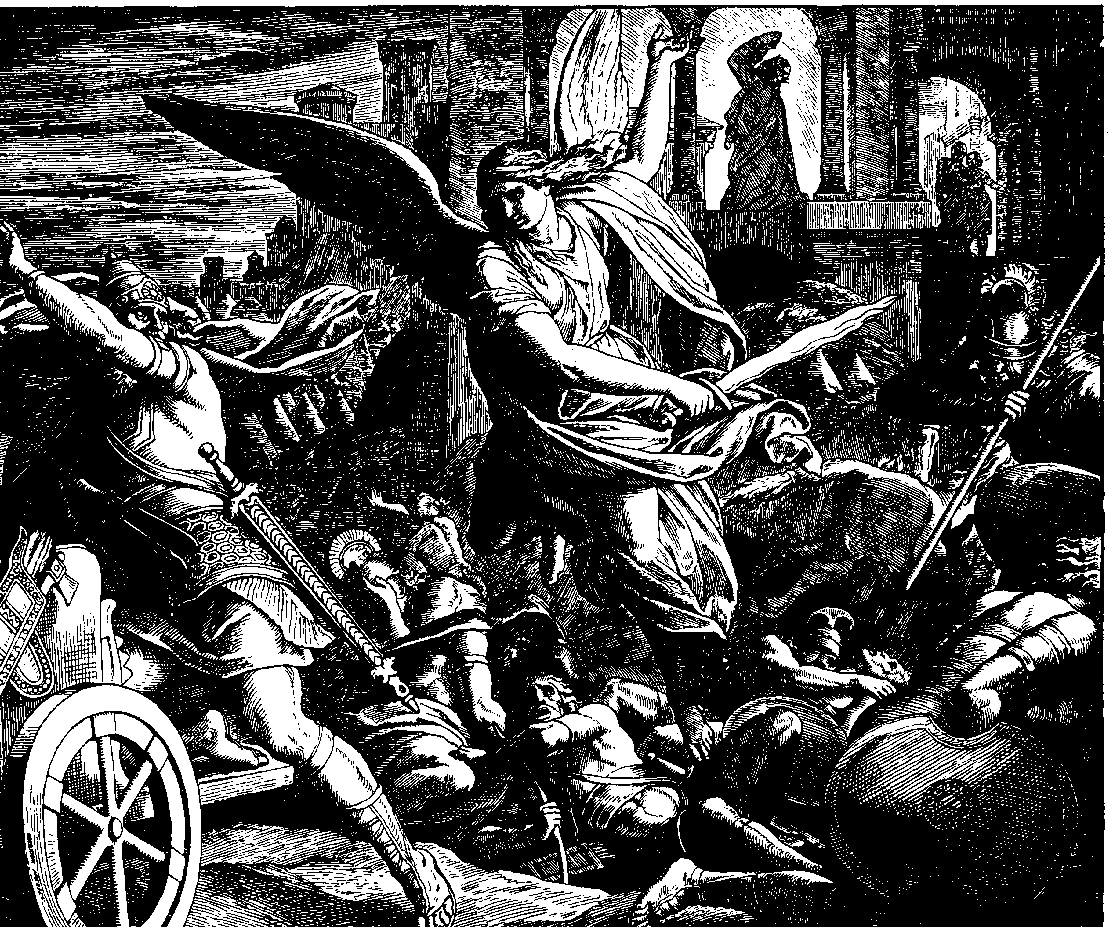|
1815 In Poetry
Nationality words link to articles with information on the nation's poetry or literature (for instance, Irish or France). Events * February 2 — Leigh Hunt released from prison after being jailed for criticizing the Prince Regent in '' The Examiner''. * May — ''North American Review'' founded in Boston, Massachusetts. * September — Lord Byron writes Samuel Taylor Coleridge of his admiration of ''Christabel'', which he has heard recited by Walter Scott; Coleridge sends Byron a copy of the poem, and after reading it Byron realizes he has unconsciously borrowed from it in ''Siege of Corinth''; he offers to omit the lines; yet on publication the lines remain and Byron offers an explanatory note. * Percy Bysshe Shelley writes ''Alastor, or The Spirit of Solitude'' which lacks a title when he passes it along to his friend, Thomas Love Peacock. Peacock suggests the name "Alastor" from Roman mythology. * First complete publication of the Old English epic poem ''Beowulf'', ... [...More Info...] [...Related Items...] OR: [Wikipedia] [Google] [Baidu] |
Irish Poetry
Irish poetry is poetry written by poets from Ireland. It is mainly written in Irish language, Irish and English, though some is in Scottish Gaelic literature, Scottish Gaelic and some in Hiberno-Latin. The complex interplay between the two main traditions, and between both of them and other poetries in English and Scottish Gaelic literature, Scottish Gaelic, has produced a body of work that is both rich in variety and difficult to categorise. The earliest surviving poems in Irish date back to the 6th century, while the first known poems in English from Ireland date to the 14th century. Although there has always been some cross-fertilization between the two language traditions, an English-language poetry that had absorbed themes and models from Irish did not finally emerge until the 19th century. This culminated in the work of the poets of the Irish Literary Revival in the late 19th and early 20th century. Towards the last quarter of the 20th century, modern Irish poetry tended ... [...More Info...] [...Related Items...] OR: [Wikipedia] [Google] [Baidu] |
Latin
Latin (, or , ) is a classical language belonging to the Italic branch of the Indo-European languages. Latin was originally a dialect spoken in the lower Tiber area (then known as Latium) around present-day Rome, but through the power of the Roman Republic it became the dominant language in the Italian region and subsequently throughout the Roman Empire. Even after the fall of Western Rome, Latin remained the common language of international communication, science, scholarship and academia in Europe until well into the 18th century, when other regional vernaculars (including its own descendants, the Romance languages) supplanted it in common academic and political usage, and it eventually became a dead language in the modern linguistic definition. Latin is a highly inflected language, with three distinct genders (masculine, feminine, and neuter), six or seven noun cases (nominative, accusative, genitive, dative, ablative, and vocative), five declensions, four verb conjuga ... [...More Info...] [...Related Items...] OR: [Wikipedia] [Google] [Baidu] |
Robert Southey
Robert Southey ( or ; 12 August 1774 – 21 March 1843) was an English poet of the Romantic school, and Poet Laureate from 1813 until his death. Like the other Lake Poets, William Wordsworth and Samuel Taylor Coleridge, Southey began as a radical but became steadily more conservative as he gained respect for Britain and its institutions. Other romantics such as Byron accused him of siding with the establishment for money and status. He is remembered especially for the poem "After Blenheim" and the original version of "Goldilocks and the Three Bears". Life Robert Southey was born in Wine Street, Bristol, to Robert Southey and Margaret Hill. He was educated at Westminster School, London (where he was expelled for writing an article in ''The Flagellant'', a magazine he originated,Margaret Drabble ed: ''The Oxford Companion to English Literature'' (6th edition, Oxford, 2000), pp 953-4. attributing the invention of flogging to the Devil), and at Balliol College, Oxford. Southey ... [...More Info...] [...Related Items...] OR: [Wikipedia] [Google] [Baidu] |
American Poetry
American poetry refers to the poetry of the United States. It arose first as efforts by American colonists to add their voices to English poetry in the 17th century, well before the constitutional unification of the Thirteen Colonies (although a strong oral tradition often likened to poetry already existed among Native American societies). Unsurprisingly, most of the early colonists' work relied on contemporary English models of poetic form, diction, and Theme (literary), theme. However, in the 19th century, a distinctive American Common parlance, idiom began to emerge. By the later part of that century, when Walt Whitman was winning an enthusiastic audience abroad, List of poets from the United States, poets from the United States had begun to take their place at the forefront of the English-language ''avant-garde''. Much of the American poetry published between 1910 and 1945 remains lost in the pages of small circulation political periodicals, particularly the ones on the far ... [...More Info...] [...Related Items...] OR: [Wikipedia] [Google] [Baidu] |
Lydia Sigourney
Lydia Huntley Sigourney (September 1, 1791 – June 10, 1865), ''née'' Lydia Howard Huntley, was an American poet, author, and publisher during the early and mid 19th century. She was commonly known as the "Sweet Singer of Hartford." She had a long career as a literary expert, publishing 52 books and in over 300 periodicals in her lifetime. While some of her works were signed anonymously, most of her works were published with just her married name Mrs. Sigourney. During the lyceum movement that flourished in the United States in the 19th century, women named literary societies and study clubs in her honor. Biography Early life Mrs. Sigourney was born in Norwich, Connecticut to Ezekiel Huntley and Zerviah Wentworth. Their only child, she was named after her father's first wife, Lydia Howard, who had died soon after marrying Ezekiel. In her autobiography ''Letters of Life'' Sigourney describes her relation to her parents, her decision to care for them, and her intent to avoid ... [...More Info...] [...Related Items...] OR: [Wikipedia] [Google] [Baidu] |
Battle Of Waterloo
The Battle of Waterloo was fought on Sunday 18 June 1815, near Waterloo, Belgium, Waterloo (at that time in the United Kingdom of the Netherlands, now in Belgium). A French army under the command of Napoleon was defeated by two of the armies of the Seventh Coalition. One of these was a British-led coalition consisting of units from the United Kingdom of Great Britain and Ireland, United Kingdom, the Netherlands, Kingdom of Hanover, Hanover, Duchy of Brunswick, Brunswick, and Duchy of Nassau, Nassau, under the command of the Duke of Wellington (referred to by many authors as ''the Anglo-allied army'' or ''Wellington's army''). The other was composed of three corps of the Kingdom of Prussia, Prussian army under the command of Field Marshal Gebhard Leberecht von Blücher, von Blücher (the fourth corps of this army fought at the Battle of Wavre on the same day). The battle marked the end of the Napoleonic Wars. The battle was contemporaneously known as the Battle of Mont Saint-J ... [...More Info...] [...Related Items...] OR: [Wikipedia] [Google] [Baidu] |
Ann Radcliffe
Ann Radcliffe (née Ward; 9 July 1764 – 7 February 1823) was an English novelist and a pioneer of Gothic fiction. Her technique of explaining apparently supernatural elements in her novels has been credited with gaining respectability for Gothic fiction in the 1790s.The British LibrarRetrieved 12 November 2016./ref> Radcliffe was the most popular writer of her day and almost universally admired; contemporary critics called her the mighty enchantress and the Shakespeare of romance-writers, and her popularity continued through the 19th century. Interest has revived in the early 21st century, with the publication of three biographies.Chawton House LibraryRuth Facer, "Ann Radcliffe (1764–1823)" retrieved 1 December 2012. Biography Early life Radcliffe was born Ann Ward in Holborn, London on 9 July 1764. She was the only child to William Ward (1737-1798) and Ann Oates (1726-1800), and her mother was 36 years old when she gave birth. Her father worked as a haberdasher in Lond ... [...More Info...] [...Related Items...] OR: [Wikipedia] [Google] [Baidu] |
James Hogg
James Hogg (1770 – 21 November 1835) was a Scottish poet, novelist and essayist who wrote in both Scots and English. As a young man he worked as a shepherd and farmhand, and was largely self-educated through reading. He was a friend of many of the great writers of his day, including Sir Walter Scott, of whom he later wrote an unauthorised biography. He became widely known as the "Ettrick Shepherd", a nickname under which some of his works were published, and the character name he was given in the widely read series '' Noctes Ambrosianae'', published in ''Blackwood's Magazine''. He is best known today for his novel ''The Private Memoirs and Confessions of a Justified Sinner''. His other works include the long poem '' The Queen's Wake'' (1813), his collection of songs ''Jacobite Relics'' (1819), and his two novels ''The Three Perils of Man'' (1822), and ''The Three Perils of Woman'' (1823). Biography Early life James Hogg was born on a small farm near Ettrick, Selkirkshire, ... [...More Info...] [...Related Items...] OR: [Wikipedia] [Google] [Baidu] |
William Cowper
William Cowper ( ; 26 November 1731 – 25 April 1800) was an English poet and Anglican hymnwriter. One of the most popular poets of his time, Cowper changed the direction of 18th-century nature poetry by writing of everyday life and scenes of the English countryside. In many ways, he was one of the forerunners of Romantic poetry. Samuel Taylor Coleridge called him "the best modern poet", whilst William Wordsworth particularly admired his poem ''Yardley-Oak''. After being institutionalised for insanity, Cowper found refuge in a fervent evangelical Christianity. He continued to suffer doubt and, after a dream in 1773, believed that he was doomed to eternal damnation. He recovered and wrote more religious hymns. His religious sentiment and association with John Newton (who wrote the hymn "Amazing Grace") led to much of the poetry for which he is best remembered, and to the series of Olney Hymns. His poem "Light Shining out of Darkness" gave English the phrase: "God moves ... [...More Info...] [...Related Items...] OR: [Wikipedia] [Google] [Baidu] |
Louisa Costello
Louisa Stuart Costello (9 October 1799 – 24 April 1870) was an Anglo-Irish writer on travel and French history, said to have been born either in Ireland or Sussex. Life and work Costello lived in Paris, France, near the River Seine (according to her death certificate). She had no true home, but went from place to place staying with friends and acquaintances. She and her brother Dudley Costello, also well known for travel writing, promoted the copying of illuminated manuscripts. By the age of 15 she had become a proficient artist and later her earnings from miniature painting were enough to support her mother and to keep her brother while he attended Sandhurst. She wrote over 100 texts, articles, poems and songs, and knew such people as Sir Walter Scott, Charles Dickens, Lord Byron, Thomas Moore. She was also a historian, painter and novelist. Her father, Colonel James Francis Costello, died in April 1814 while fighting against Napoleon. Among Costello's published work ... [...More Info...] [...Related Items...] OR: [Wikipedia] [Google] [Baidu] |
The Destruction Of Sennacherib
"The Destruction of Sennacherib" is a poem by Lord Byron first published in 1815 in his ''Hebrew Melodies'' (in which it was titled The Destruction of Semnacherib). The poem is based on the biblical account of the historical Assyrian siege of Jerusalem in 701 BC by Assyrian king Sennacherib, as described in the Bible (2 Kings 18–19, Isaiah 36–37). The rhythm of the poem has a feel of the beat of a galloping horse's hooves (an anapestic tetrameter) as the Assyrian rides into battle. Biblical story The poem relates to the Biblical account of Sennacherib's attempted siege of Jerusalem. According to the Bible record in 2 Kings 18:13, the Assyrian army came "against all the fenced cities of Judah, and took them." When the Assyrians were besieging Jerusalem, Hezekiah prayed to Jehovah in the Temple, and Isaiah sent the reply from Jehovah to Hezekiah: "I will defend this city, to save it, for mine own sake, and for my servant David's sake" (2 Kings 19:34), and during the foll ... [...More Info...] [...Related Items...] OR: [Wikipedia] [Google] [Baidu] |
She Walks In Beauty
"She Walks in Beauty" is a short lyrical poem in iambic tetrameter written in 1814 by Lord Byron, and is one of his most famous works. It is said to have been inspired by an event in Byron's life. On 11 June 1814, Byron attended a party in London. Among the guests was Mrs. Anne Beatrix Wilmot, wife of Byron's first cousin, Sir Robert Wilmot. He was struck by her unusual beauty, and the next morning the poem was written.Cummings, Michael J. (2008)Byron's She Walks in Beauty at Cummings Study Guides. Retrieved 10 July 2014 It is thought that she was the first inspiration for his unfinished epic poem about Goethe, a personal hero of his. In this unpublished work, which Byron referred to in his letters as his magnum opus, he switches the gender of Goethe and gives him the same description of his cousin. =Musical settings= The poem has inspired various composers over time, including Roger Quilter, Gerald Finzi, Toby Hession, Ivy Frances Klein, Jean Coulthard, Isaac Nathan I ... [...More Info...] [...Related Items...] OR: [Wikipedia] [Google] [Baidu] |


.jpg)





_by_Walker_and_Boutall_c1890s_(cropped).png)